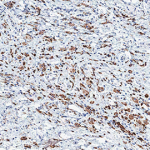Mr. W provided a great opportunity to teach the fellows and residents about how the contrasts in the genetics, pathogenesis, and clinical manifestations of autoinflammatory versus autoimmune diseases gives us a unique vantage point from which to understand the distinct yet intersecting roles of the innate and adaptive arms of the immune response—an understanding that could guide us directly to our therapeutic choice, intravenous methylprednisolone plus subcutaneous anakinra. The clinical response was rapid and profound, and within a few days Mr. W was on oral prednisone, had learned how to self-inject his anakinra, and was ready for discharge. Also, one of the residents on the team told me she was now interested in a career in rheumatology.
So where is the “Michael Moore moment” in this happy chain of events? It happened soon after Mr. W’s discharge, when we learned that his prescription-drug insurance carrier had denied coverage for anakinra, the few doses sent home with Mr. W had all been used, and his fever and arthritis had returned. So the unfortunate Mr. W was readmitted to the hospital to be placed back on IV steroids and daily anakinra injections while we geared up to do battle with his prescription-drug insurance company.
We soon learned that Mr. W’s health insurance was with an HMO owned by the University of Michigan, which had not objected to his treatment with our biologic of choice when he was an inpatient. The problem was that Mr. W’s outpatient medications were controlled by a different carrier, which held a subcontract from his HMO and had its own ideas about which medications to authorize. This company informed us that anakinra was not a Food and Drug Administration–approved treatment for adult-onset Still’s disease, and that we could use it only after first attempting treatment with a long list of other medications—including essentially all DMARDs approved for RA treatment followed by, curiously, all of the other biologics approved for RA. If we disagreed, we could write a letter and it would be considered in due course.
With a patient who had experienced an unnecessary relapse and rehospitalization due to decisions made by people who, I was certain, had no clue what Still’s disease was, I was in an unusually testy mood as I sat down to compose the necessary letter. Addressing it “To whom it may concern,” I used relatively undiplomatic prose to make the obvious points that any practicing rheumatologist tries to communicate in such a situation. Finally, in an effort to impress or intimidate “whom it may concern,” I signed the letter not only as professor and chief of the division of rheumatology at the University of Michigan, but also as president-elect of the ACR. As I gave the letter to one of our clinic staff to fax to “whom it may concern,” I asked her to find out who would ultimately adjudicate the dispute. Who, indeed, had the final say in determining the fate of Mr. W?
“To Whom” Revealed
The answer came later that day, and was a stunner. To paraphrase my staff member, “Dr. Fox, Mr. W’s drug benefits company told us that, because they are a subcontractor to his HMO, which is owned by the University of Michigan, and because you are the designated expert of the University of Michigan Health System on the use of biologics in rheumatic diseases, you will have the final say in this dispute.” Despite my immediate embarrassment at having written an angry letter to myself and recollections of Walt Kelly’s comic strip “Pogo,” known for the line, “We have met the enemy and they are us,” my reaction was naive relief, assuming that Mr. W’s anakinra would be promptly authorized. Such optimism was shattered by the next piece of news: “The insurer told us that, even though you are the final authority in this matter, your letter must first proceed through multiple levels of review, and that you can’t intervene until all those reviews have run their course.” I had written an angry letter to myself, but was not allowed to respond or take appropriate action.


